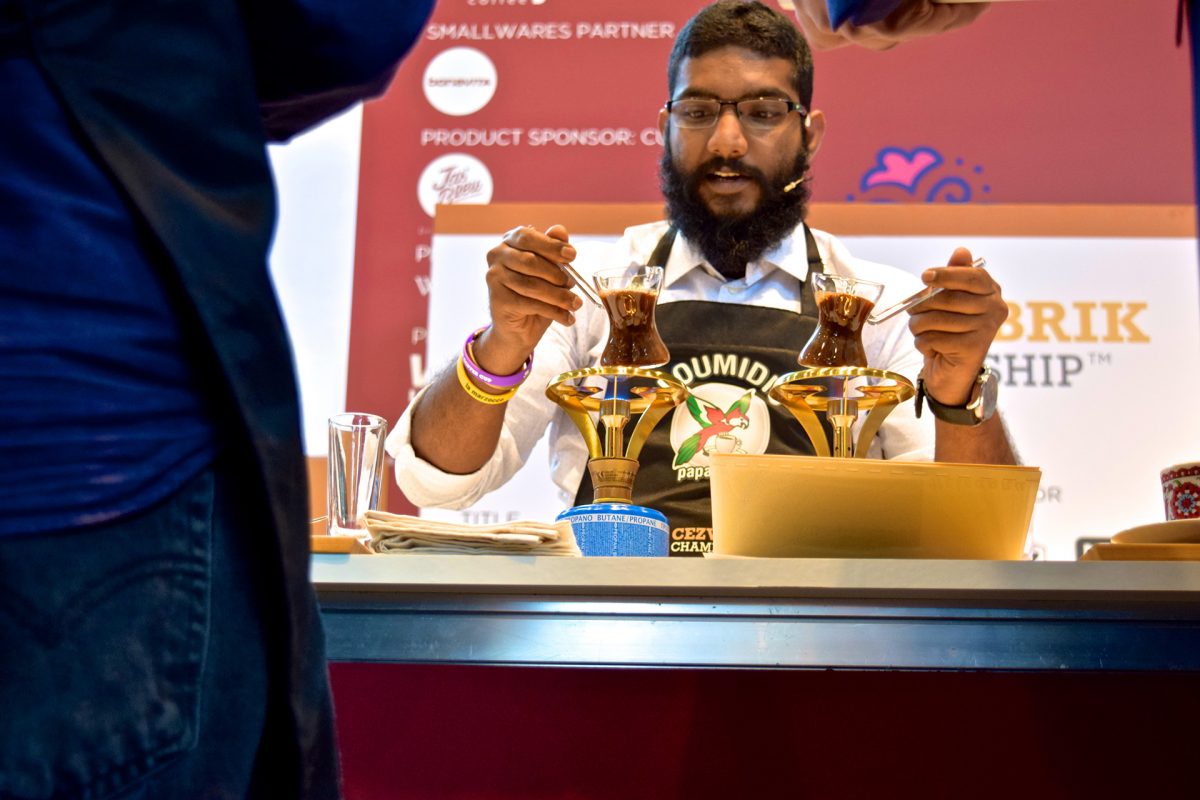
Barista competitions and brewing exhibitions. Tasting challenges, coffee cocktail showdowns, and roast curve battles. You can expect to see events like these when you attend a global Specialty Coffee Association event—but there’s one more competition afoot that fits in a different way.
We’re talking about the World Cezve/Ibrik Championship, which rewards the best handlers of a small brewing pot known as a cezve or an ibrik, sometimes known colloquially as “Turkish coffee.” This past June in Budapest, the Cezve/Ibrik Championship took place under the same roof as four other international barista games as part of the World of Coffee Events portfolio. It was last staged alongside other WCE events in 2014 in Rimini, with new rules since implemented and updated for this year’s event in Hungary.
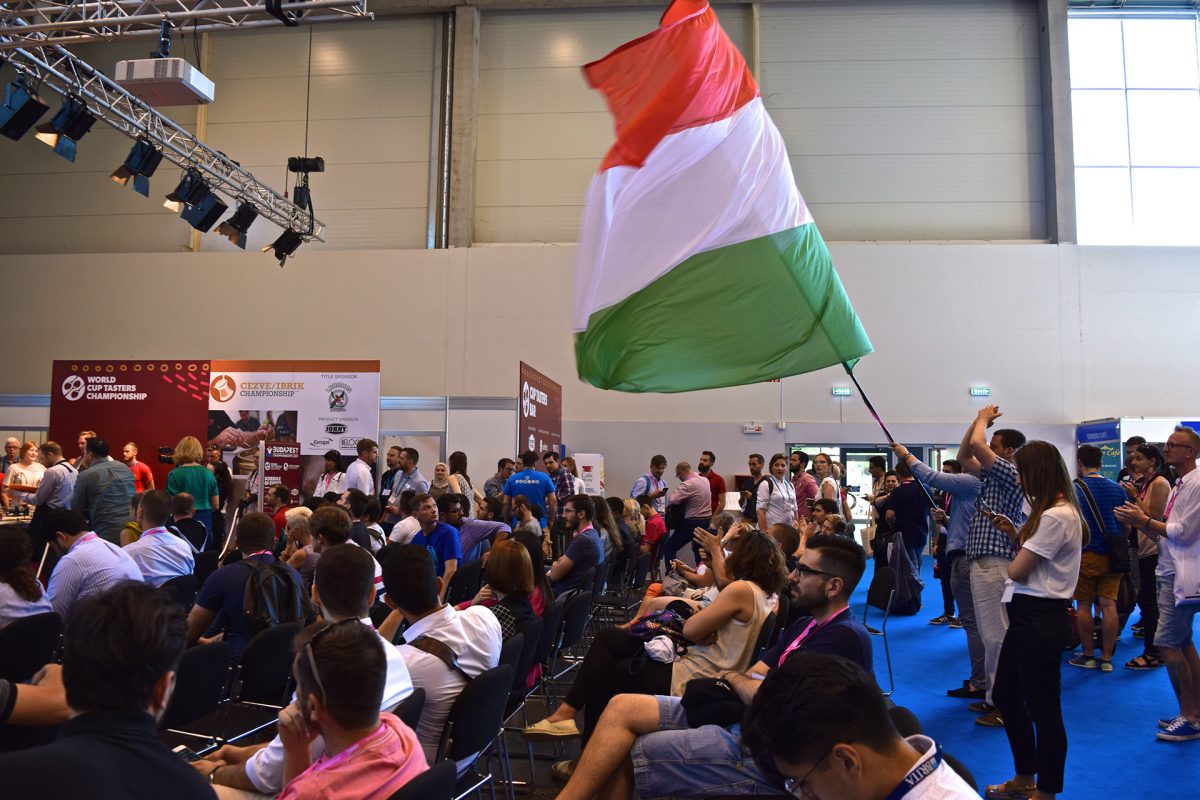
It’s been a long road to this point for the competition. Since the CIC’s official debut in 2009 in Cologne, some countries “have struggled to find enough competitors to run a national championship in the past,” reported the SCAE’s Café Europa spring 2016 edition. Written on behalf of the CIC working group, the same article outlined revised rules and regulations to “make this competition more attractive and accessible for baristas who had no experience with this brewing method” as well as “easier to evaluate by judges experienced in other barista competitions.”
A year later, those intentions were incarnated in Jeremy Challender, the UK’s 2016 Brewer’s Cup Champion serving as a 2017 CIC judge. “We used to see dancers on stage, or drummers,” he recalled, addressing the competition’s earlier reputation for flamboyance. “It’s slowly getting pulled into World of Coffee [specifications], which I don’t think makes it less interesting—it just probably makes it easier to judge. So the spectrum is maybe a little bit narrowed, but I would still stay it probably gives you the most creative scope.”
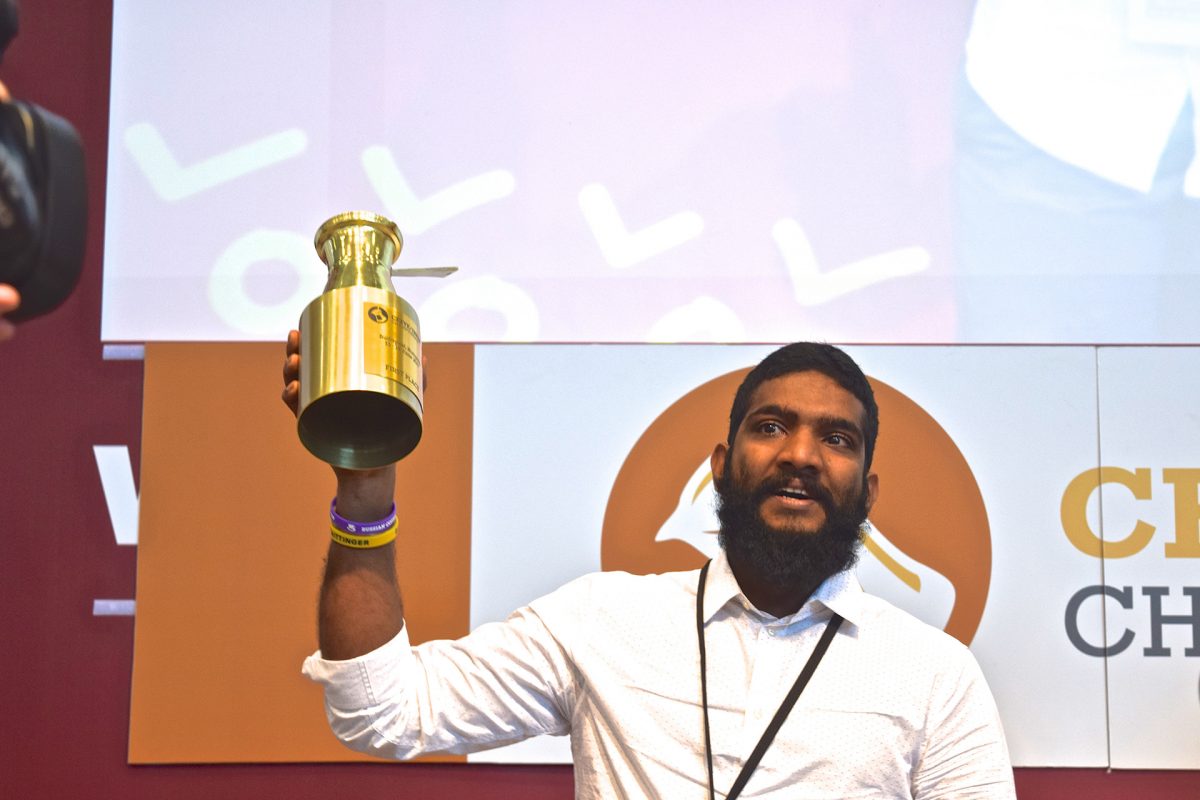
2017 World Cezve/Ibrik Champion Karthikeyan Rajendram.
Last year’s fusion of the Specialty Coffee Association’s American and European organizations seems to be facilitating a more robust, inter-hemispheric backing of the CIC. “With strong ties to the region, the Specialty Coffee Association of Europe has been the primary organizer and promoter of the Cezve/Ibrik Championship, keeping it close to its roots,” WCE marketing manager Alex Bernson wrote in an email. “The World Coffee Events team has been able to more directly collaborate with the European team on the Cezve/Ibrik Championship.” In Budapest, the CIC shared the floor with the World Cup Tasters Championship, “a great opportunity to expand the audience for both championships,” Bernson says.
As the ten contestants each took 15 minutes to make a simple drink and a signature drink, the crowd was rapt. Besides many a proper copper coffee pot, 2017’s CIC included very now tools of the trade—AeroPresses, whipping syphons, and culinary syringes, to name a few. Presentation music ranged from traditional oud instrumentalization to “Stairway to Heaven.” To capture their hopefuls on film, supporters hovered heavily over the rope cordoning. National flags were waved and draped.
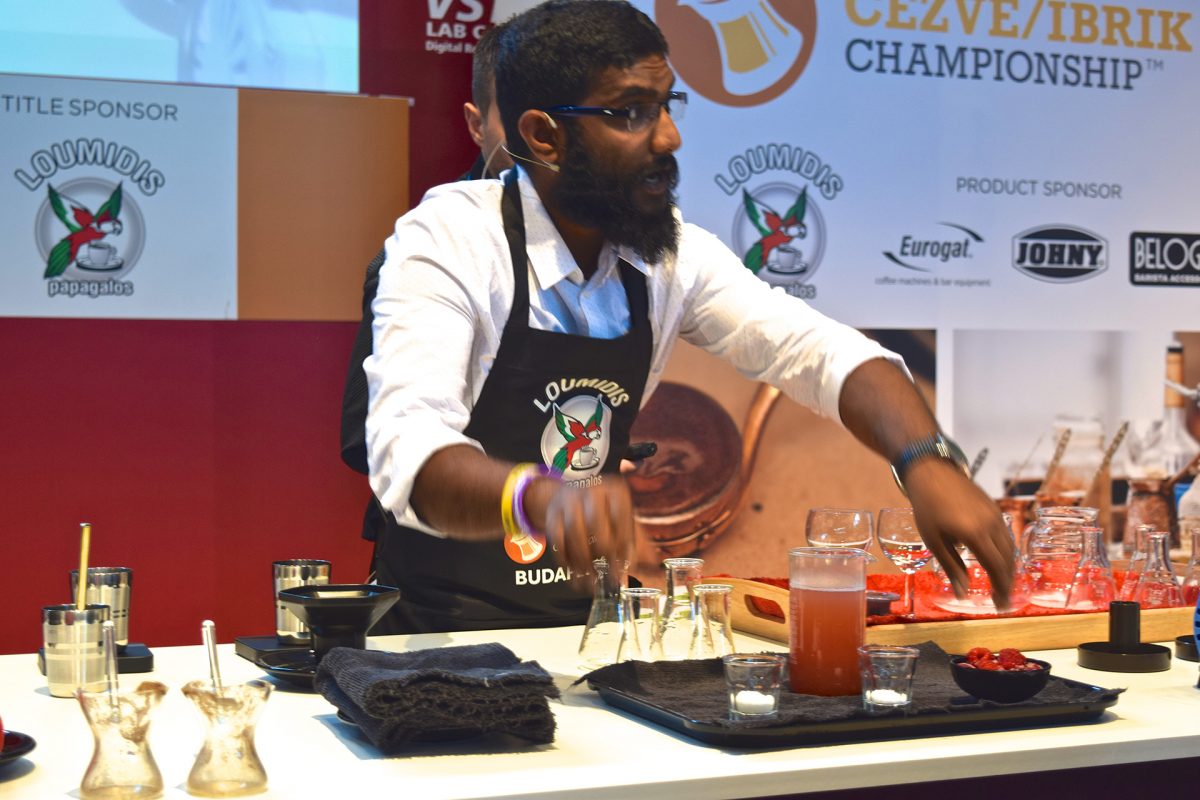
The 2017 gold trophy went to Karthikeyan Rajendram, a quality controller at Raw Coffee Company in Dubai, whose own personal trajectory reflects the ibrik’s increasingly global and globalizing orbit. Originally from southern India, the 23 year old represented United Arab Emirates, where he had moved to work for McDonald’s. Rajendram told Sprudge he was still “making burgers” upon entering—and winning—UAE’s national CIC in 2014.
Of his now-favorite technique, he said, “It can get a better taste and tactile balance, better than an espresso.” Living in an Islamic country has upped his game, too. “[Most Muslims] don’t drink alcohol,” he explained. “Coffee—that’s their only choice—so if you can make it right, people love that.” He won with a natural Yirgacheffe produced by MoPlaCo and used glass ibriks because “it looks very sexy” when you see the water boiling.
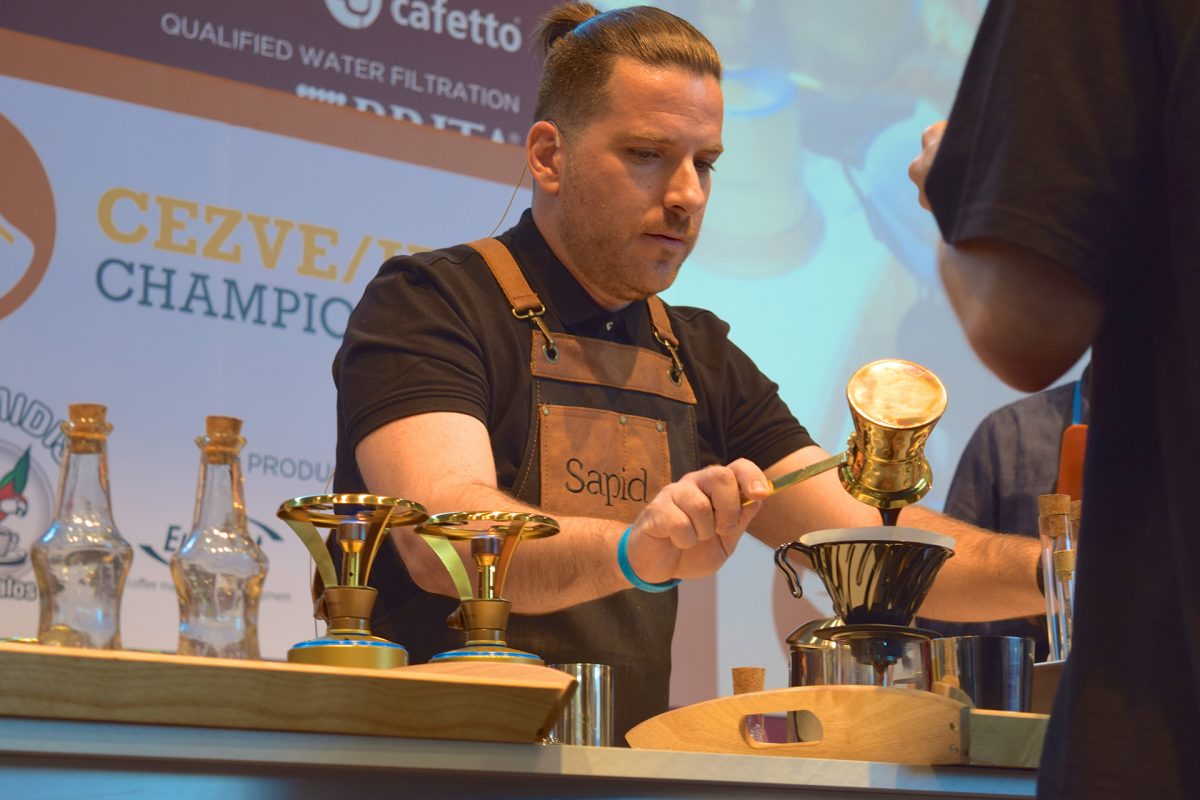
Dionysis Moustis.
Also iconoclastic, at least in the modern-era arc of this half-millennium-old method, was second place winner Dionysis Moustis’s coffee choice. The Greek contestant’s Panama Geisha sourced from La Lajones Estate full-on pooh-poohed the old stereotype of an ibrik prepared with low-quality beans and multiple boils that produces a bitter, burnt taste demanding sweeteners.
Reflecting on the event a couple weeks later, 2013 CIC champion Turgay Yildizli shared mixed feelings. “It’s good and bad for this competition to be with the other competitions. There are a lot of people visiting these trade shows and the competitions, and they see the cezve/ibrik,” he told Sprudge. However, sometimes “people pay [more] attention to these [simultaneously staged] competitions and then the cezve/ibrik stays on the sidelines.”
As to how she felt after Rajendram was declared winner, “I am very satisfied,” said CIC events manager Annemarie Tiemes. “I would love to have had a woman winning something—there’s quite a number of women competing in the ibrik competition—but in the end, it’s the best ambassador who should win, and I’m 100 percent sure that Karthik will be that ambassador.”
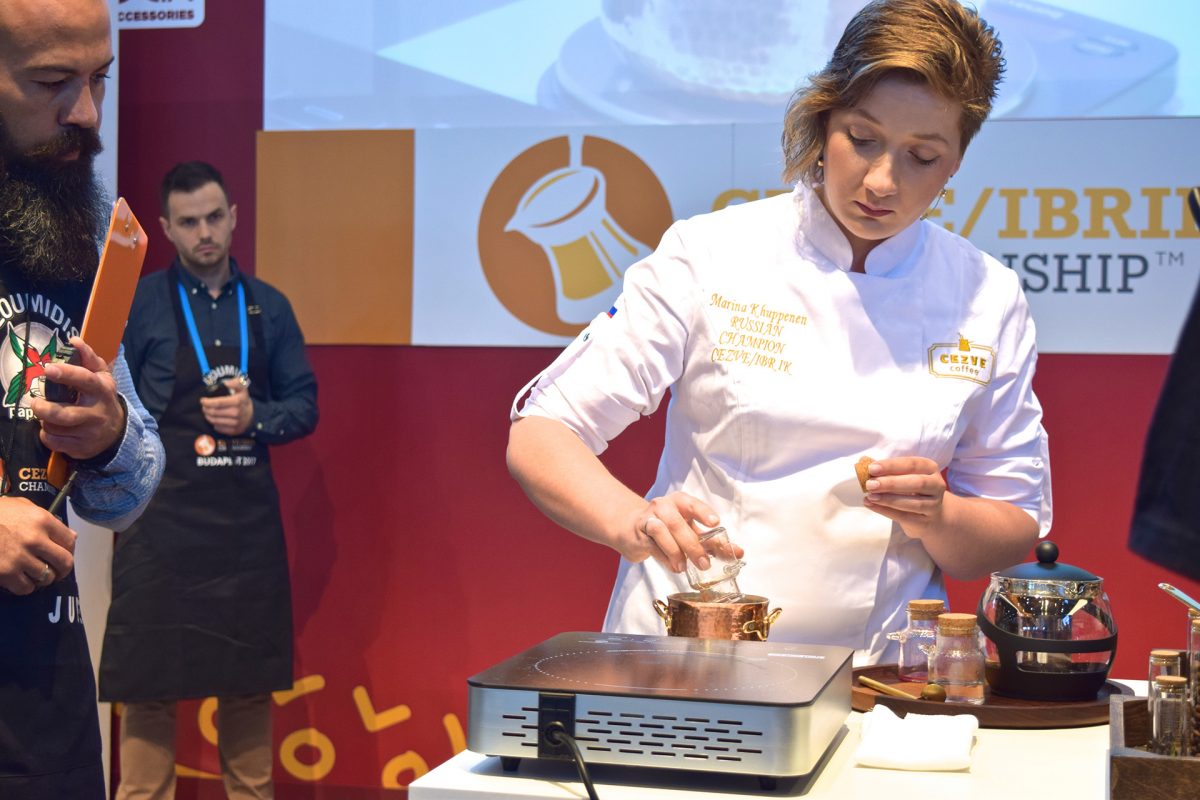
Marina Khyuppenen.
Half of this year’s six finalists were women, with Marina Khyuppenen ranking highest, in third place, just 4.5 points behind second. The Russian contestant owns Moscow’s Cezve Coffee, and she also, in another way, owned the iconic pot. She wore it as the gold-embroidered logo of her business on a white chef jacket, heart side, and as a pair of earrings in copper.
Sixth place’s Sara Al-Ali, a Riyadh-based barista currently running pop-up That Coffeeshop, described her Cup of Excellence-awarded coffee from Finca Los Azahares in Chiapas within a narrative of personal and timely relevance. Inspired by “Muslims around the world” observing Ramadan, Al-Ali explained, “Coffee is no longer a morning ritual, so I wanted to create a beverage that continues that state of serenity and meditation throughout the night of Ramadan.” Later asked if she, a Saudi woman who wears a headscarf, felt compelled to fulfill an ambassadorial role, she replied, “I want to represent my country, my culture, and of course my religion. Many people see me covered and think that I have limitations but, no, here I am in the competition—world competition. I’m going around and doing everything like anybody else.”
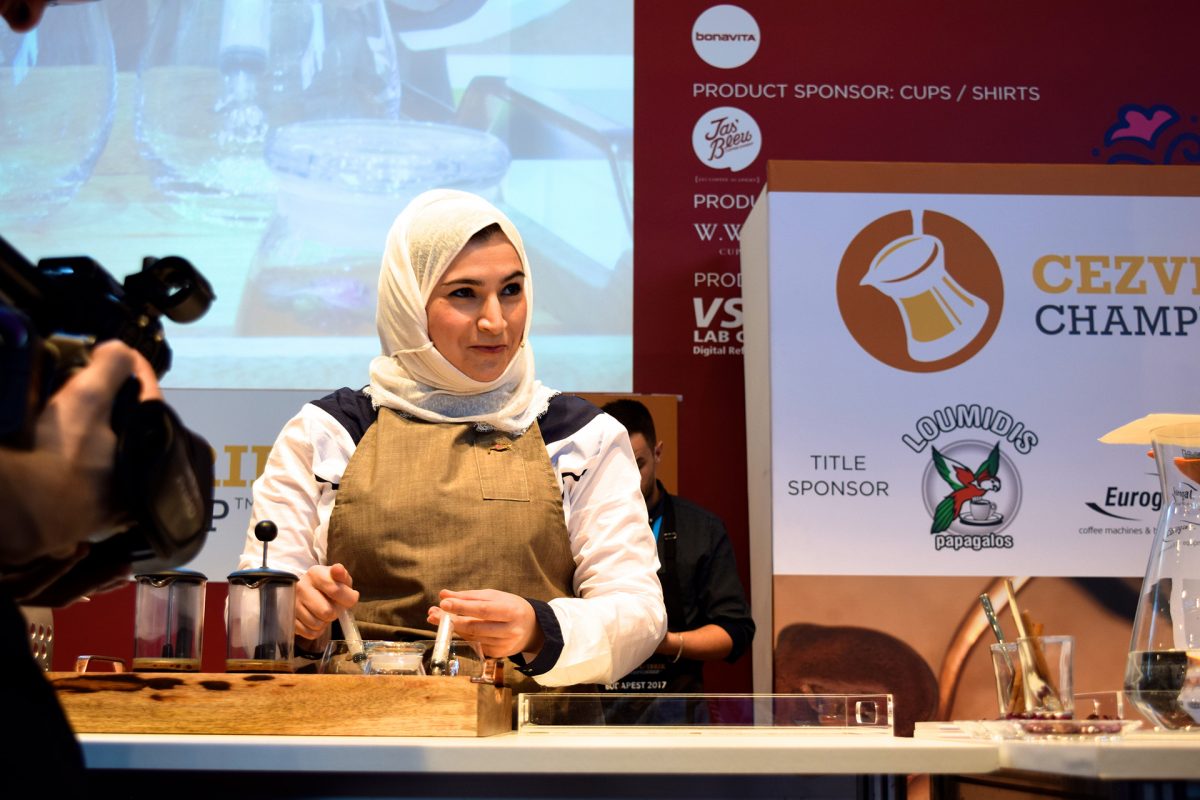
Sara Al-Ali.
At the time of writing, WCE had no information to share about a 2018 CIC location, though hoped to do so “very soon.” This year’s edition, meanwhile, seems to have ignited an interest in seeing the ibrik’s diaspora spread beyond the Middle East, North Africa, and Eastern Europe.
Australia-bound judge Jeremy Challender, for one, could not hide his fervor. “I’m bringing it Down Under, so don’t be surprised if you see an Australian Cezve/Ibrik Championship relatively soon,” he told Sprudge, before adding, “And I’m pretty disappointed if you don’t do the same in the States.”
Karina Hof is a Sprudge staff writer based in Amsterdam. Read more Karina Hof on Sprudge.
The post At The World Cezve/Ibrik Championship, A Competition Grows In Popularity appeared first on Sprudge.

